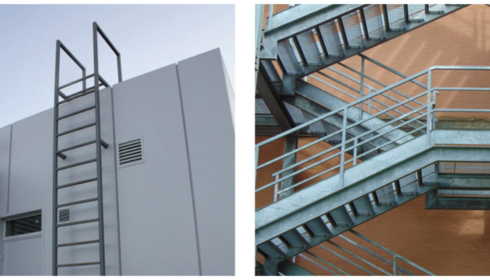Perfect Edges: Europe Imports’ Corner Solutions for Pools
Discover how European imports are revolutionizing pool design with their innovative corner solutions. From sleek and modern lines to seamless integration, these products are setting a new standard for creating perfect edges in pool construction. Explore the top trends and benefits of incorporating European corner solutions into your pool project.
Europe Imports is at the forefront of introducing cutting-edge corner solutions for pools, enhancing aesthetic appeal and functionality. These innovations enable the creation of refined, elegant edges, transforming pool designs. Adopting these solutions offers numerous advantages, from increased durability to a modern aesthetic, elevating pool construction to a new level.
Introduction to Pool Corner Solutions
Introduction to Pool Corner Solutions
Pool corner solutions are essential components of a well-designed pool system, ensuring efficient water circulation and maintenance. These solutions are designed to address the common challenge of poor water circulation and debris buildup in the corners of swimming pools. By utilizing specialized corner solutions such as corner brushes, jets, or vacuum ports, pool owners can effectively eliminate stagnant water and debris accumulation in hard-to-reach areas. Pool corner solutions not only enhance the aesthetics of the pool by keeping it clean and clear but also contribute to the overall health and safety of the pool environment by preventing algae growth and minimizing the risk of bacterial contamination.
Benefits of European Pool Edging Technology
European pool edging technology offers a range of benefits for pool owners looking to enhance the aesthetics and functionality of their swimming pools. One of the key advantages of this technology is its durability and long-lasting quality. European pool edging materials are often made from high-quality materials such as natural stone, porcelain, or concrete, which are designed to withstand the harsh outdoor elements and heavy foot traffic. This means that pool owners can enjoy a beautifully finished pool edge that not only looks elegant but also remains in pristine condition for years to come, with minimal maintenance required. Additionally, European pool edging technology provides a versatile range of design options, allowing pool owners to customize their pool edges to suit their preferences and complement the overall style of their outdoor space. Whether opting for a sleek and modern look or a more traditional and classic design, European pool edging technology offers a variety of shapes, colors, and finishes to create a truly unique and personalized pool edge.
Another significant benefit of European pool edging technology is its practicality and safety features. The precision engineering of European pool edging ensures a smooth and level transition between the pool edge and the surrounding deck or patio, reducing the risk of tripping or slipping accidents. This is particularly important for families with young children or elderly individuals who may be more vulnerable to such hazards. The non-slip surface of European pool edging materials also provides added safety for swimmers entering and exiting the pool, helping to prevent accidents and injuries. Furthermore, the seamless integration of European pool edging technology with other pool features, such as water features or lighting, enhances the overall functionality and visual appeal of the pool area, creating a cohesive and inviting outdoor space for relaxation and entertainment.
Europe Imports Corner offers a range of pool mosaic tiles designed to complement innovative European pool edging. These tiles ensure both aesthetic appeal and improved safety, reducing slip risks. Crafted with precision, they’re ideal for creating a stylish pool environment. Explore diverse options to enhance pool zones seamlessly.
Types of Pool Edging Materials
There are several types of pool edging materials that homeowners can choose from to enhance the look and functionality of their pool area. One popular option is natural stone, such as limestone, travertine, or granite. Natural stone edging provides a luxurious and elegant look to the pool area, and its durability makes it a long-lasting choice. Another common pool edging material is concrete, which is versatile and can be customized to fit any design preference. Concrete can be stamped, colored, or textured to create a unique and stylish look around the pool.
Brick and pavers are also commonly used as pool edging materials due to their durability and variety of colors and patterns available. Brick and pavers provide a classic and timeless look to the pool area, and their textured surface can help prevent slipping when wet. Additionally, glass or ceramic tiles are popular choices for pool edging, offering a sleek and modern aesthetic. These materials are easy to clean and maintain, making them a practical option for pool owners looking for a low-maintenance edging solution. Overall, the choice of pool edging material will depend on personal style preferences, budget, and desired level of maintenance.
Installation Process for Imported Pool Edges
The installation process for imported pool edges involves several key steps to ensure a smooth and secure installation. The first step is to carefully unpack and inspect the pool edges upon delivery to ensure that all pieces are accounted for and in good condition. Next, the installation area should be prepared by ensuring it is clean, level, and free of any debris that could interfere with the installation process. It is important to follow the manufacturer’s instructions for installing the pool edges, which may involve using specific adhesives or tools to secure the edges in place. Proper alignment and spacing of the pool edges are crucial to ensure a seamless and professional finish. Once the pool edges are installed, they should be allowed to set and cure according to the manufacturer’s recommendations before the pool is filled with water.
After the pool edges have been installed and allowed to properly cure, it is important to conduct a final inspection to ensure that the installation was successful and that the edges are secure and level. Any gaps or imperfections should be addressed and corrected to ensure a smooth and uniform appearance. It is also important to follow any maintenance guidelines provided by the manufacturer to ensure the longevity and durability of the pool edges. Regular cleaning and maintenance will help to keep the pool edges looking their best and extend their lifespan. By following these steps and taking proper care of the installed pool edges, you can enjoy a beautiful and functional pool area for years to come.
Maintenance Tips for Pool Corner Solutions
Maintaining the corners of your pool is crucial to ensure its longevity and safety for swimmers. One essential maintenance tip for pool corner solutions is to regularly inspect and clean the corners to prevent any build-up of debris, algae, or calcium deposits. Use a pool brush or scrubber to gently clean the corners and remove any dirt or grime that may have accumulated. It is also important to check the corners for any cracks, chips, or signs of wear and tear, as addressing these issues promptly can prevent further damage and potential safety hazards. Regularly monitoring the corners of your pool and addressing any maintenance needs promptly can help extend the lifespan of your pool and ensure a safe and enjoyable swimming experience for all.
Another important maintenance tip for pool corner solutions is to ensure proper water circulation and chemical balance. Poor water circulation can lead to stagnant water in the corners, which can promote algae growth and bacterial contamination. To improve water circulation in the corners, consider using a pool brush or vacuum to manually agitate the water and remove any debris that may be obstructing the flow. Additionally, maintaining the proper chemical balance in your pool water is essential to prevent corrosion and damage to the pool corners. Regularly test the water chemistry and adjust the pH, alkalinity, and sanitizer levels as needed to keep the water balanced and free of harmful contaminants. By following these maintenance tips for pool corner solutions, you can help preserve the integrity of your pool corners and ensure a clean and safe swimming environment for all.
Design Trends in European Pool Edging
In recent years, European pool edging design has seen a shift towards a more modern and minimalist aesthetic. The use of clean lines, simple shapes, and neutral colors such as white, grey, and black has become increasingly popular. This design trend emphasizes a sleek and contemporary look that complements the overall design of the pool area. Materials such as natural stone, concrete, and porcelain tiles are commonly used for pool edging to achieve a sophisticated and elegant appearance. The focus is on creating a seamless transition between the pool and its surroundings, enhancing the visual appeal of the entire outdoor space.
Another emerging trend in European pool edging design is the incorporation of sustainable and eco-friendly materials. With a growing emphasis on environmental consciousness, many pool owners are opting for edging materials that are not only aesthetically pleasing but also environmentally responsible. Recycled glass tiles, reclaimed wood, and composite materials made from recycled plastics are gaining popularity in pool edging design. These sustainable materials not only contribute to a greener approach to pool design but also add a unique and distinctive element to the overall look of the pool area. This trend reflects a growing awareness of the importance of sustainability in design and a desire to create eco-friendly outdoor spaces that are both beautiful and environmentally friendly.
Comparing European vs. Local Pool Edging Options
European pool edging options often feature sleek and modern designs that can add a touch of luxury to any pool area. Materials such as natural stone, porcelain tiles, and concrete pavers are commonly used in European pool edging, providing a high-end and sophisticated look. These materials are durable and weather-resistant, making them ideal for outdoor use. European pool edging options also offer a wide range of colors, textures, and patterns to choose from, allowing for customization to suit the aesthetic preferences of the homeowner. Additionally, European pool edging designs often boast clean lines and minimalist profiles, creating a seamless transition between the pool and its surroundings.
On the other hand, local pool edging options may offer a more traditional and rustic feel to the pool area. Materials like brick, flagstone, and wood are commonly used in local pool edging, providing a warm and inviting atmosphere. These materials are often sourced locally, making them a cost-effective option for pool owners. Local pool edging designs may also incorporate elements of regional architecture and landscaping, adding a unique and personalized touch to the pool area. While local pool edging options may not have the same level of variety and sophistication as European designs, they can still create a charming and cozy ambiance that complements the overall aesthetic of the outdoor space.
Cost Considerations for Imported Pool Edges
When considering imported pool edges, cost is a crucial factor to take into account. The price of imported pool edges can vary significantly depending on factors such as the material, design, thickness, and brand. Higher-end materials like natural stone or premium porcelain will generally come with a heftier price tag compared to more budget-friendly options like concrete or composite materials. Additionally, intricate designs or custom-made pool edges will incur higher costs due to the labor and expertise required for their production. It is essential to factor in not just the initial cost of the imported pool edges but also the long-term maintenance expenses. Some materials may require more frequent upkeep or repairs, which can add to the overall cost over time. When making a decision based on cost considerations, it is essential to weigh the upfront expenses against the durability, aesthetics, and maintenance requirements of the imported pool edges to determine the best value for your investment.
Furthermore, it is crucial to consider additional costs associated with imported pool edges, such as shipping, customs duties, and installation fees. Importing pool edges from overseas suppliers may entail significant shipping costs, especially for heavy or bulky materials. Customs duties and taxes can also impact the overall cost, depending on the country of origin and import regulations. Moreover, professional installation is often recommended for imported pool edges to ensure proper fitting and longevity. Installation fees can vary based on the complexity of the project, access to the pool area, and the expertise of the installer. It is advisable to obtain quotes from multiple suppliers and installation professionals to compare costs and make an informed decision that aligns with your budget and quality expectations. By carefully evaluating all cost considerations for imported pool edges, you can select a high-quality and visually appealing option that meets your needs without breaking the bank.
Eco-Friendly Features of European Pool Edges
European pool edges are often designed with eco-friendly features that not only enhance the aesthetics of the pool but also contribute to sustainable practices. One common eco-friendly feature is the use of natural materials such as stone or wood for pool edges. These materials are sourced sustainably and have a minimal impact on the environment compared to synthetic materials. Additionally, natural materials blend seamlessly with the surrounding landscape, creating a harmonious and organic look for the pool area. The use of natural materials also helps in reducing the carbon footprint associated with the construction and maintenance of the pool.
Another eco-friendly feature of European pool edges is the incorporation of water-saving technologies. Many pool designs in Europe include features such as automatic water level controls, efficient filtration systems, and rainwater harvesting systems. These technologies help in conserving water, reducing water wastage, and lowering the overall environmental impact of the pool. By integrating water-saving technologies into pool design, European pool edges demonstrate a commitment to sustainability and responsible water management practices, making them a popular choice for eco-conscious homeowners and businesses.
Case Studies: Successful Applications of European Pool Edging
European pool edging has been successfully applied in numerous case studies across the world, showcasing its versatility and aesthetic appeal. In one notable case study, a luxurious resort in the Mediterranean region implemented European pool edging to enhance the visual appeal of their infinity pool. The sleek and modern design of the pool edging complemented the stunning ocean views, creating a seamless transition between the pool and the surrounding landscape. The high-quality materials used in the pool edging also ensured durability and longevity, making it a cost-effective investment for the resort.
Another successful application of European pool edging can be seen in a residential project in the suburbs of a major city. The homeowners opted for European pool edging to create a sophisticated and contemporary look for their backyard oasis. The clean lines and minimalist design of the pool edging added a touch of elegance to the outdoor space, making it a perfect spot for relaxation and entertainment. The homeowners were impressed by the ease of maintenance and the resistance to wear and tear that the European pool edging provided, making it a practical and stylish choice for their project.














Post Comment
You must be logged in to post a comment.